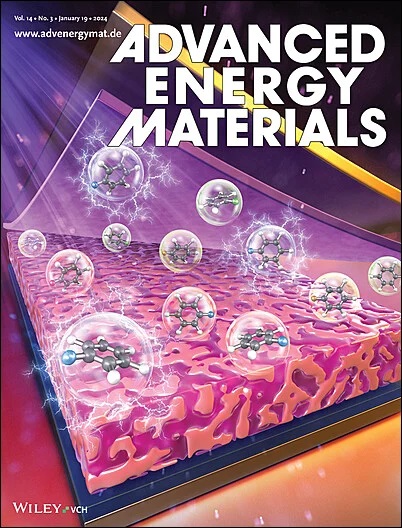Deep Eutectic Solvent Additive Induced Inorganic SEI and an Organic Buffer Layer Synergistic Protected Li Anode for Durable Li-CO2 Batteries
IF 24.4
1区 材料科学
Q1 CHEMISTRY, PHYSICAL
引用次数: 0
Abstract
Interface instability and safety concerns related to lithium anodes are major barriers to the practical use of Li-CO2 batteries. To address these challenges, an organic–inorganic dual-layer protective coating is developed to improve Li⁺ transport, provide electronic insulation, and isolate CO2 and H2O. Deep eutectic solvents (DESs) are used as electrolyte additives to promote a stable, inorganic solid electrolyte interphase (SEI) composed of Li3N, LiF, and LiCl, which enhance ionic conductivity, lowers surface energy, and suppresses dendrite growth. Additionally, an elastic Li-Nafion buffer layer is incorporated to mitigate volume expansion during cycling. This dual protection system significantly improves cycling stability, extending the lifespan of Li||Li and Li-CO2 batteries by 5.19 and 4.62 times, respectively, with a reversible cycle life of 4160 h. A pouch battery using this system also demonstrates exbatteryent stability, with 1400 h of cycling at 50 µA cm−2 and a cut-off specific capacity of 250 µAh cm−2. These findings offer valuable insights for enhancing the stability and longevity of Li-CO2 batteries.

求助全文
约1分钟内获得全文
求助全文
来源期刊

Advanced Energy Materials
CHEMISTRY, PHYSICAL-ENERGY & FUELS
CiteScore
41.90
自引率
4.00%
发文量
889
审稿时长
1.4 months
期刊介绍:
Established in 2011, Advanced Energy Materials is an international, interdisciplinary, English-language journal that focuses on materials used in energy harvesting, conversion, and storage. It is regarded as a top-quality journal alongside Advanced Materials, Advanced Functional Materials, and Small.
With a 2022 Impact Factor of 27.8, Advanced Energy Materials is considered a prime source for the best energy-related research. The journal covers a wide range of topics in energy-related research, including organic and inorganic photovoltaics, batteries and supercapacitors, fuel cells, hydrogen generation and storage, thermoelectrics, water splitting and photocatalysis, solar fuels and thermosolar power, magnetocalorics, and piezoelectronics.
The readership of Advanced Energy Materials includes materials scientists, chemists, physicists, and engineers in both academia and industry. The journal is indexed in various databases and collections, such as Advanced Technologies & Aerospace Database, FIZ Karlsruhe, INSPEC (IET), Science Citation Index Expanded, Technology Collection, and Web of Science, among others.
 求助内容:
求助内容: 应助结果提醒方式:
应助结果提醒方式:


